ASRock Core 100HT-BD : Bringing HTPCs to the Mainstream Market [UPDATED : Noise Issue]
by Ganesh T S on July 19, 2010 9:34 PM EST- Posted in
- Home Theater
- Arrandale
- ASRock
- Media Streamer
- Core i3
- HTPC
One of the most interesting aspects of the Arrandale platform is the fact that the GPU is integrated in the same package as the CPU. The GPU die also contains the PCIe and DDR3 memory controller. While the main CPU is fabricated in the 32nm process, the GPU die is fabricated in the 45nm process. Placing the GPU and CPU in the same package saves on power and also board costs. The graphics part of the GPU die in the package is an evolutionary version of the Intel G45 IGP. A comparison of the Intel HD Graphics in the Arrandales and the earlier G45 is provided below.

An interesting thing to note here is the availability of dynamic frequency scaling for the Arrandale GPU, which actually lowers the power consumption of the system. A 900 MHz GPU part on a typical Clarkdale system would up the TDP by 15W or more compared to the lowest end Clarkdale with a 733 MHz GPU. On the Core 100 HT-BD, however, overclocking doesn't require any special thermal arrangements. The higher frequencies kick in only when the load on the GPU becomes high.
We had earmarked the Clarkdales as the perfect HTPC platforms earlier this year. This Arrandale offering may actually tempt us to revise our opinions, given the form factor and the power profile. We will cover this in detail in the later sections. In the rest of this section, we will cover the features of the Intel HD Graphics engine, as it relates to HTPC users. Before going into the details, let us take a look at what Intel has improved in terms of video decode and processing in this iteration of their IGP.
DXVA Compatibility
Intel's support for DXVA came in for a lot of criticism during the G45 days. The paranoia inside the company made it impossible for open source enthusiasts to get hold of the special DXVA interface used by Intel. It used to be made available under NDA to various ISVs (Independent Software Vendors) such as Cyberlink, ArcSoft etc. Thankfully, things have been slowly changing for the better. Currently, most applications (except for VLC) are able to take advantage of the DXVA acceleration provided by the HD Graphics engine. The screenshot below gives us a quick idea of the DXVA capabilities of the Core i3-330M in the Core 100 HT-BD. It is interesting to observe that there is no VLD mode for VC-1, but we did observe 1080p VC-1 Blu-Rays play with less than 5% CPU usage on ArcSoft TMT. This just indicates that the interface to full acceleration mode for VC-1 is available only under NDA as of now.
HD Audio Bitstreaming
Right from its debut, the Arrandales have been able to bitstream HD audio from Blu-Ray discs played back through Cyberlink's PowerDVD or ArcSoft TMT. The Core 100 HT-BD is no different. We were able to play back all Blu-Rays with bitstreaming to the AV receiver, as the following screenshots show. In addition, hardware acceleration with Intel HD Graphics shows its class, with low CPU utilization being observed during playback. Despite the red spikes observed in the DPC Latency Checker program, we didn't notice any audio dropouts or stutters in the video.
Using the open source ffdshow Audio Decoder, HD audio can also be bitstreamed out of standalone MKVs and M2TS files. (More on this in the next section)
With the above features, Intel HD Graphics seems to be a winner, and the Core 100 HT-BD could potentially be the utopian HTPC that enthusiasts have been searching for. Is that really the case?
Driver Support - Intel Misses the Boat!
Since the release of the G45, videophiles have been clamouring for the support of 23.976 fps display refresh rate. Intel caved in and released a driver where you could choose 23 Hz in the graphics control panel. Unfortunately, this only results in a refresh rate of 24 fps. While watching videos encoded at 23.976 fps, this results in a small stutter every 40 seconds or so. Most people get past this by setting the refresh rate of their display to 60 Hz. However, dedicated enthusiasts still see this as a major shortcoming of the platform.
Another issue which has remained since the G45 days is the efforts taken to open up the DXVA specifications of the GPU for open source developers. Lot of progress has been made over the years, but full VC-1 decode acceleration remains elusive in applications like MPC-HC or VLC. As we discussed in the DXVA Compatibility subsection, the VC1_VLD mode which is commonly utilized by open source video decoders is absent. However, Intel's marketing team does indicate complete VC-1 decode acceleration. We can only surmise that this is made available for the Microsoft and other ISV decoders to make use of.
The drivers supposedly support advanced deinterlacing, but users do not have as much control over the algorithms used as they have when using ATI HTPC cards such as the Radeon 5xxx series. Noise reduction algorithms are also not transparent to the users. The frequency of driver updates is rather low, and issues continue to remain unaddressed.
If the end user can put up with these iGPU limitations (personally, I can), the Core 100 HT-BD is indeed a very good choice. This will be further elaborated in the next few sections.


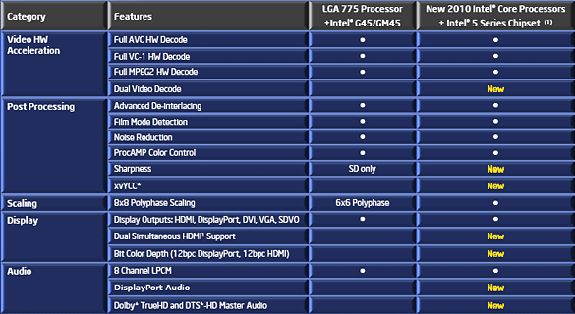
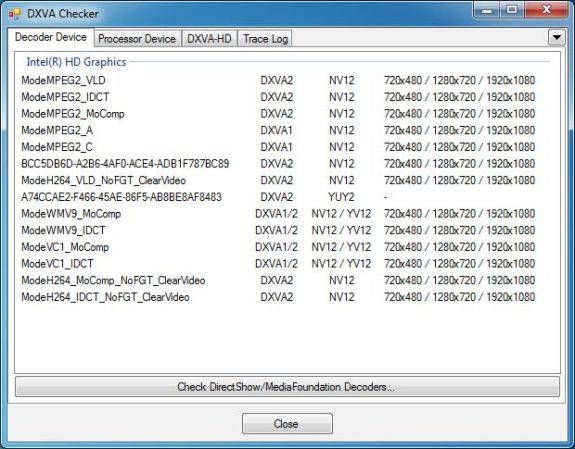
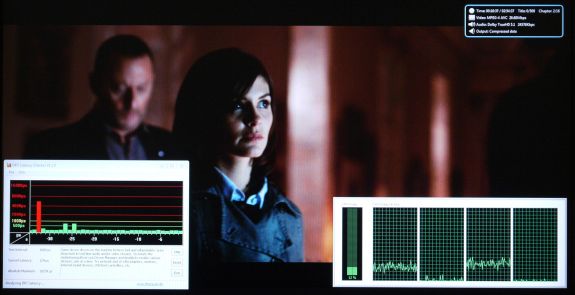
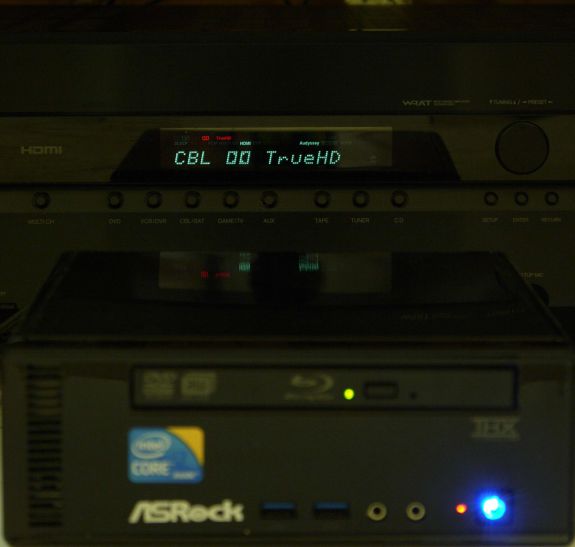
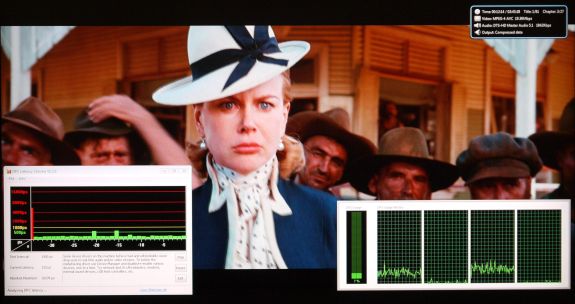
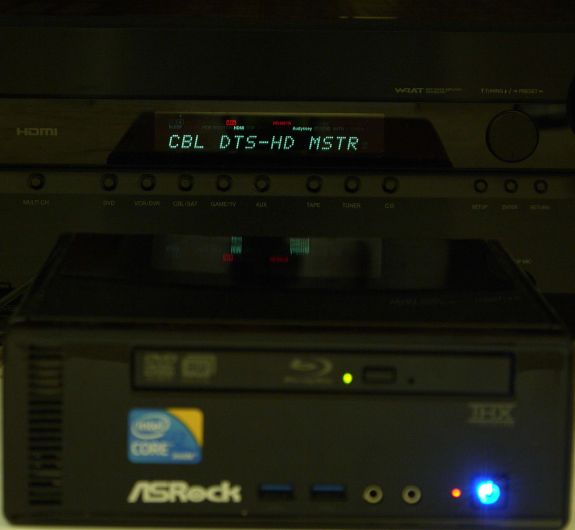








107 Comments
View All Comments
ganeshts - Tuesday, July 20, 2010 - link
Aikouka,Thanks for your insights.
1. Customers should hopefully be able to salvage some stuff from their previous setups (Blu-Ray playback software, keyboards and mice etc.)
2. We didn't do exhaustive testing on the VIA codec. Most of the time, it was disabled since we were using audio over HDMI.
3. The sticker is optional ( It comes as a separate label with the package, but you can choose whether to stick it in the front or not :) )
4. The build quality of the remote is not that great and there are better options out there as you observe.
5. Major drawback of ION is the lower general performance, higher power consumption and absence of HD audio bitstreaming. I think the $200 extra is worth it.
Aikouka - Tuesday, July 20, 2010 - link
1) It'd definitely be nice to harvest a few extra items from previous builds, but maybe a blurb about the overall cost of the software might be nice. I'm not sure, but it might help people sway toward or against the unit as being their Blu-Ray player, since you can easily just buy a decent separate unit for $100 or so. Another aspect that might sway some users is that the BR software will only truly integrate into WMC (last I checked). TMT3 has a plug-in for MediaPortal, but it isn't true integration (just loads the player and minimizes MP).I guess that all kind of goes with your talk on how it can be a pain to get all of the formats working, which let me tell you... I definitely agree with you on that! I had a point where using my laptop as a HTPC, I could get sound while playing MKVs through WMP, but not with WMC. It was the strangest thing :P.
3) Alright, that's good that the sticker is optional ;). I just wish manufacturers would push to not showing the rest of those connectors. It seems the consumer's desire is to have components that are PCs that don't look like PCs, but not many devices have those connections and if they do, they're typically hidden (except the PS3, but they're out of the way).
5) I think the main point I was trying to drive is that even though the ION is inherently weaker, does it still perform the tasks properly? I mean, you can take the kids to school in a Porsche 911 Turbo, but is it a tad bit overkill compared to a Prius? Do you really think the bitstreaming matters that much? I don't think most people would even be able to tell the difference between a good encode output from a SPU and the bitstream... I know I can't! :)
------------------
I like the articles though... I think the HTPCs are going to become more and more popular as people look for non-standard ways to get content. I've actually gone back to using my server as a quasi-HTPC to help alleviate the stress I was putting on my M1530. It's a little better now that I replaced some of its noisy components :).
vlado08 - Thursday, July 22, 2010 - link
" 5. Major drawback of ION is the lower general performance, higher power consumption and absence of HD audio bitstreaming. I think the $200 extra is worth it. "And what about picture quality? HQV v 2.0
The ION does the 23,976 but the Core 100HT - does not.
ganeshts - Thursday, July 22, 2010 - link
Good point, vlad08. The point mentioned was the drawbacks of the ION. Of course, if one wants to give the advantages of ION, they are as you mention.I think the average users just set the display refresh rate to 60 Hz and forget about it.. so the 24fps bug doesn't affect those.
Picture quality.. yes, maybe ION is better. We haven't done benchmarking on that platform yet (and will probably not do because it is a product from last year, and we have more exciting Nvidia stuff coming up) to confirm.
pirspilane - Tuesday, July 20, 2010 - link
Good point about the software costs. This is really a $900+ machine.The Mac Mini competes well with this machine when you consider:
- It comes loaded with some very nice software
- It's light years ahead, aesthetically
- It beats the AsRock on noise and power consumption
- Most people already have a Blu-ray player and don't want the aggravation of dealing with Blu-ray playback on an HTPC. I rarely use my HTPC (Corel WinDVD) to play Blu-rays because of the hassle factor.
tmservo - Tuesday, July 20, 2010 - link
While this seems like a good train of thought, it isn't. The poster above points out he uses pro (which is fine, I do too) but there is no reason why Home Premium, which has media center, wouldn't be used by the majority of users. So, $645 + $91. That's it, for anyone wanting the DVD model. Or, about $736.Your comparison at $900 is based on a comparison with a model featuring a Bluray Drive and Bluray software. This is not valid, because you're now comparing apples to oranges ;) The mac mini doesn't have, won't have, and doesn't support a bluray drive. So, the two aren't the same, at all. There just isn't a comparison.
Whether or not people have a seperate player already, there are lots of people who like the idea of 1 single box doing everything, like DVR, DVD, BD, Media Management, etc.
So, let's say you do a comparison on that front. So, the Mac Mini is $699. DVD only. Yes, it comes with software, but not really a front end for this.. so you download Front Row, which was last updated almost 2 years ago. You then go about hacking it to get your supports you need.
And you add a remote control, because the Mac Mini doesn't come with one. So, even if this remote is "flimsly and crap" you add a remote control that is say $50 (and don't say "iPhone" because then you're adding $300 in expense for a remote for everyone who doesn't have one).
So now the cost of your Mini with a remote is basically the same as this with a copy of Win7HP. Except, oh yeah, even if you get the DVD one of this, your ability to later convert to BD is there. Not at all on the other front. Remote wakeup? Yep. Since neither have tuner slots, both would be using say a network tuner. So, Silicon Dust HDHomeRun for both. So a wash on the cost here, except Front Row can't natively manage those tuners for anything, meanwhile Media center can.
You can buy software to do that on the mac.. now you've spent more money.
The Mac Mini is a good unit as a desktop. But for an HTPC, you spend a lot of money for almost no bang. You can get an ION based unit at about $350 that is DVD based that gives you the exact same features.... plus LPCM for your MKVs that the Mini doesn't do worth a damn.
Nothing against the Mac, but not every purpose works out for it. This just isn't one where you say "wow is that a great solution for a Mac". And AppleTV is a laughable product that should die a slow death.
Guspaz - Tuesday, July 20, 2010 - link
One reason that ASU *cough* I mean ASRock is always the first to put these out is probably that all of their SFF machines use the exact same case, nearly the same packaging, and mostly the same pack-in material.They've used this exact same case all the way back to their first Atom machines. Their ION machines also used this case, as did their bluray machines.
Now that they've introduced some CULV machines, surprise, same case again.
kwrzesien - Tuesday, July 20, 2010 - link
True.And why is it narrow and tall? Why can't they put this in a DVD-sized case with the industry standard width? The front should look just as clean as a nice DVD player, with the front ports, buttons and maybe even the drive behind a fold-down door.
whartsell - Tuesday, July 20, 2010 - link
"Unfortunately, there is no single unified interface (from XBMC or MediaPortal or any other similar program) which could successfully play back all the files from within. "Cant SageTV play back all the tested formats?
dukero - Tuesday, July 20, 2010 - link
I wish I seen this coming last month Just about finished building one ECS itx mobo and i core 3 530 in jetway 101 case and mines going to end up at about grand after software and tuners. And as far as tuners go for the asrock get a USB or homerun Ethernet.